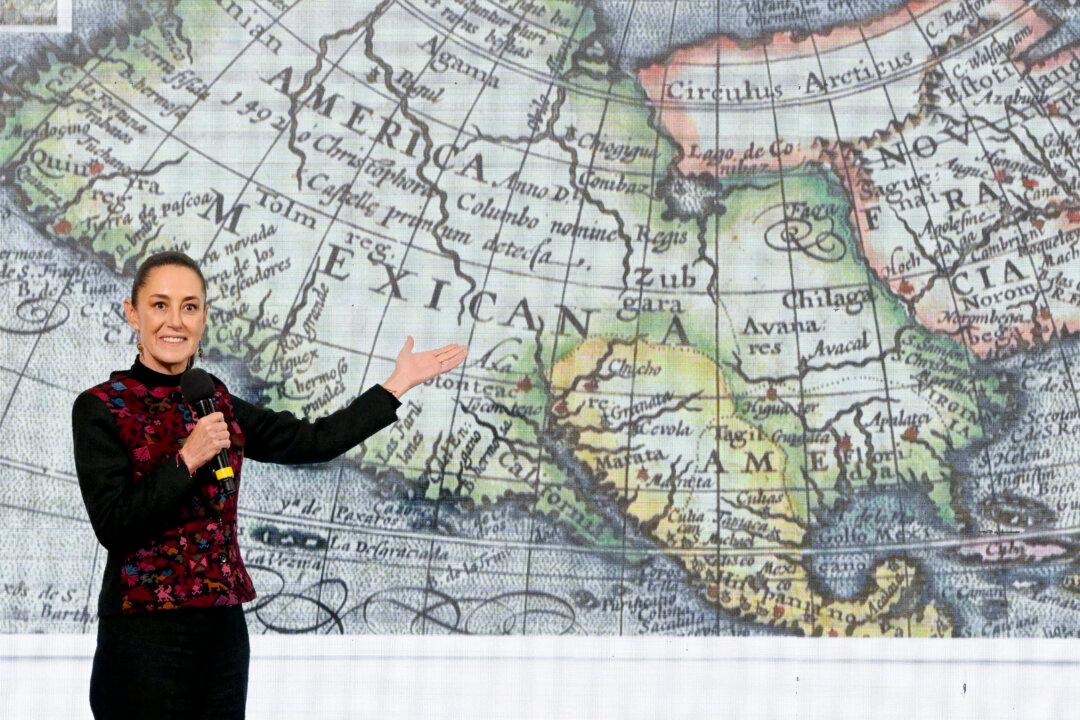Mexico’s President Claudia Sheinbaum on Monday threatened to sue Google over its decision to display the name “Gulf of America” across the entire body of water rather than just the portion of the Gulf that lies within U.S. jurisdiction, arguing that the expansive naming violates Mexican sovereignty.
At a press conference on Feb. 17, Sheinbaum said Mexico had formally asked Google to fully restore “Gulf of Mexico” as the primary name for the entire body of water, arguing that Trump’s renaming applied only to the U.S. continental shelf.
“We do not agree with this,“ Sheinbaum said of Google’s naming policy for the Gulf, adding that Mexico ”will wait for Google’s response and if not, we will proceed to court.”
Mexican authorities previously asked Google to change its naming policy for the Gulf and, during the press conference, Sheinbaum shared a written response to the request from Cris Turner, Google’s vice president of government affairs and public policy.
Turner wrote in the Feb. 10 letter that Google’s decision to display the name Gulf of America to U.S.-based users is based on an impartial and consistent application of its maps policies across all regions, which involves using names that are prescribed by authoritative sources.
“As we first announced two weeks ago, and consistent with our product policies, we’ve begun rolling out changes in Google Maps. We would like to confirm that people using Maps in Mexico will continue to see ‘Gulf of Mexico,’“ Turner wrote. ”The United States Geographic Names Information System (GNIS) has officially updated ‘Gulf of Mexico’ to ‘Gulf of America.’ To reflect the update made by the GNIS, beginning today, people in the US will see ‘Gulf of America.’ Everyone else will see both names.”
Turner added that Google representatives are willing to meet in person with the Mexican government to engage in “constructive dialogue” on the matter.
Google did not respond to a request for comment from The Epoch Times by publication time.
“The Associated Press continues to ignore the lawful geographic name change of the Gulf of America,” White House Deputy Chief of Staff Taylor Budowich said in a Feb. 14 statement on social media.
“This decision is not just divisive, but it also exposes the Associated Press’ commitment to misinformation,“ Budowich continued. ”While their right to irresponsible and dishonest reporting is protected by the First Amendment, it does not ensure their privilege of unfettered access to limited spaces, like the Oval Office and Air Force One.”
“It is alarming that the Trump administration would punish AP for its independent journalism,” Pace said in a statement. “Limiting our access to the Oval Office based on the content of AP’s speech not only severely impedes the public’s access to independent news, it plainly violates the First Amendment.”
The White House has defended its decision to limit Oval Office and Air Force One access to AP reporters, while noting that AP journalists and photographers will continue to enjoy access to the broader White House complex.







